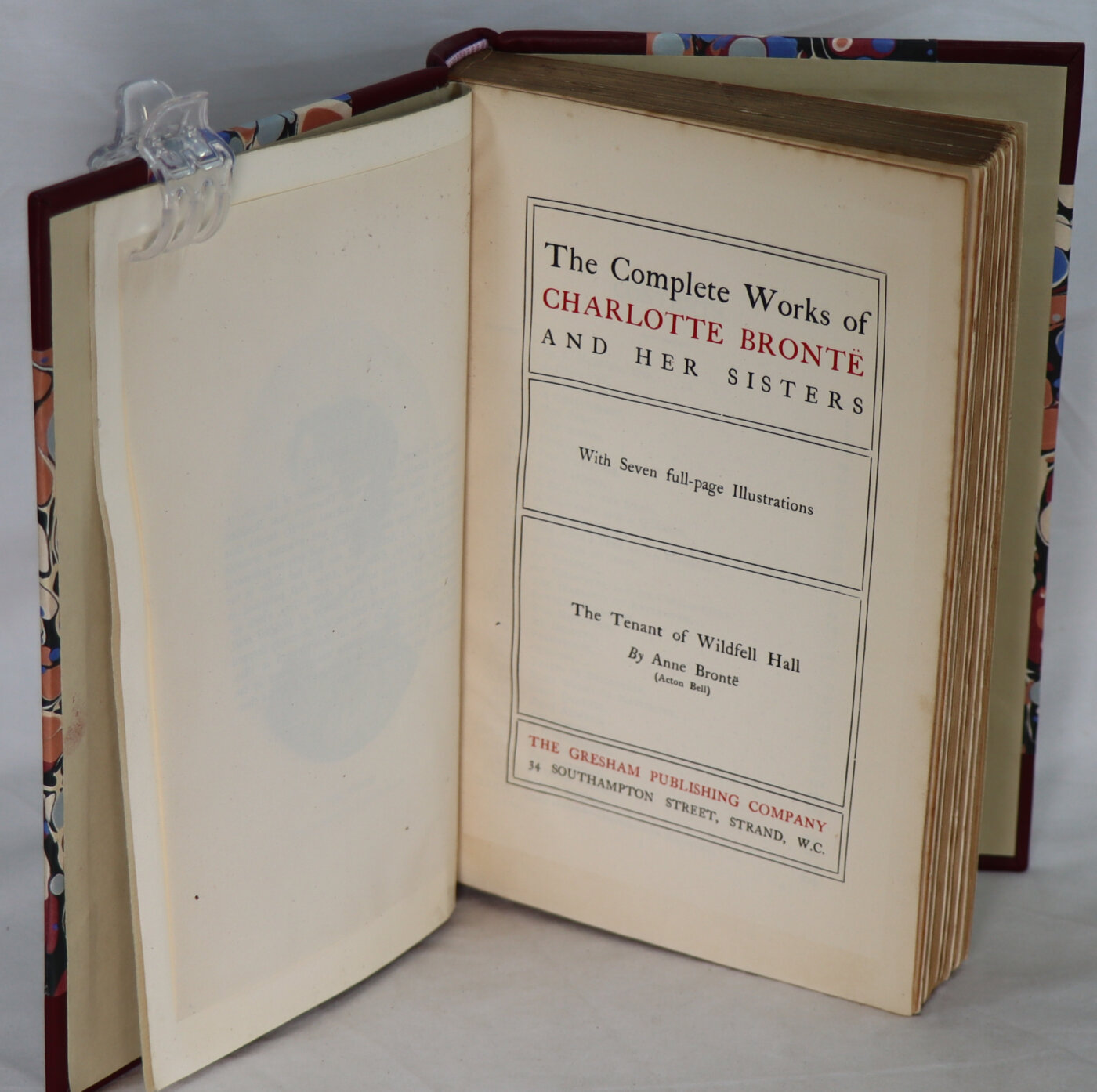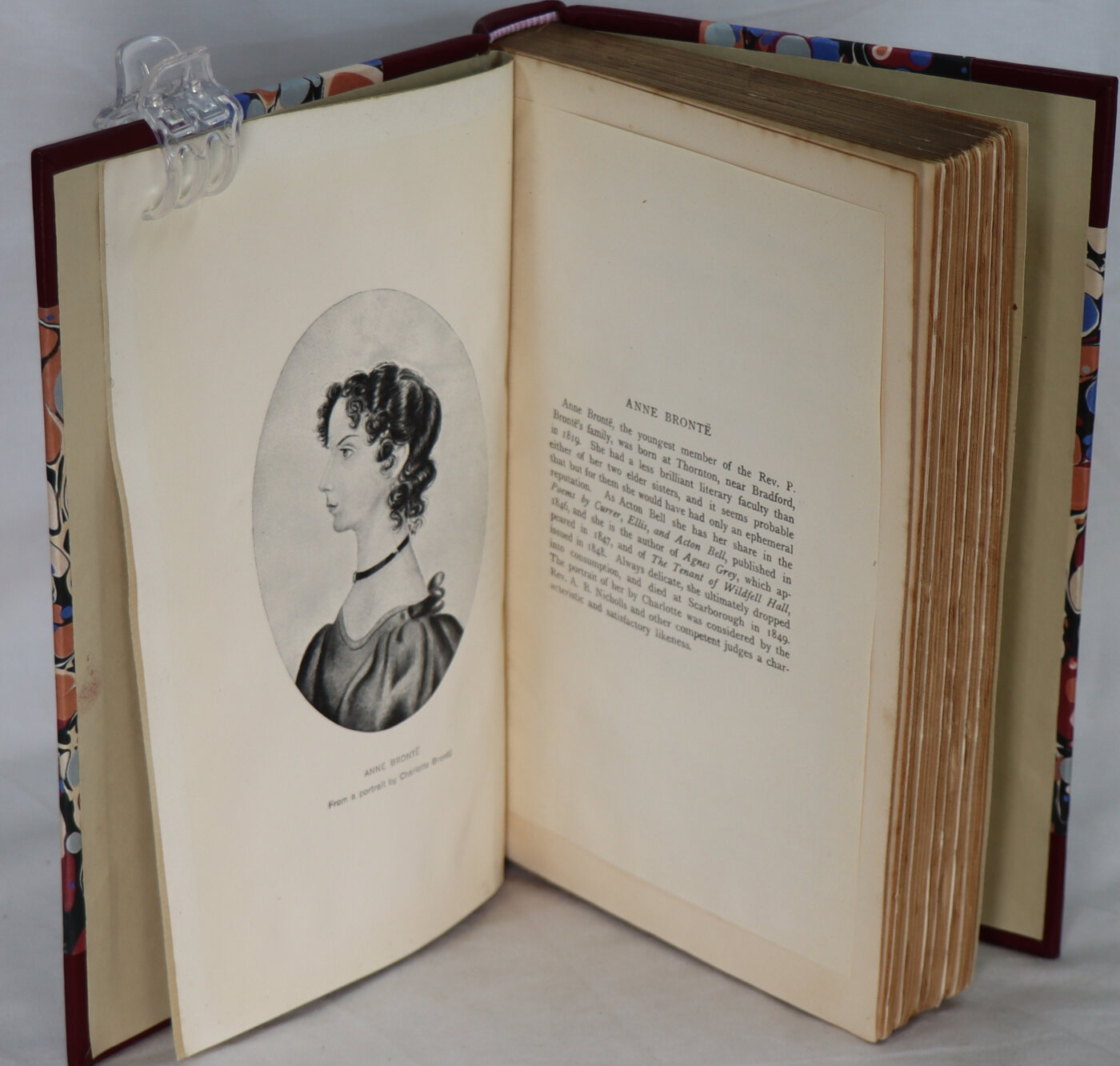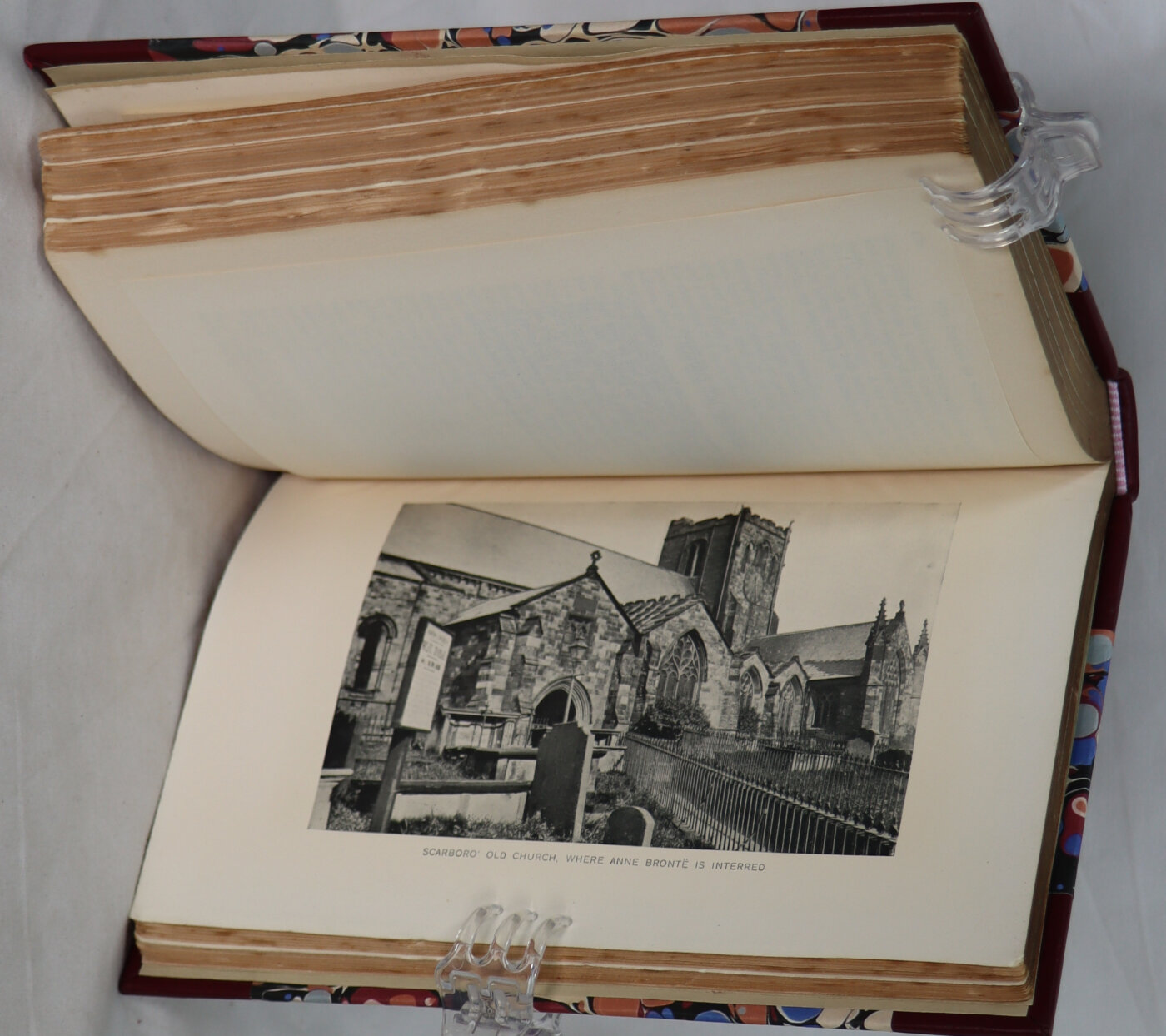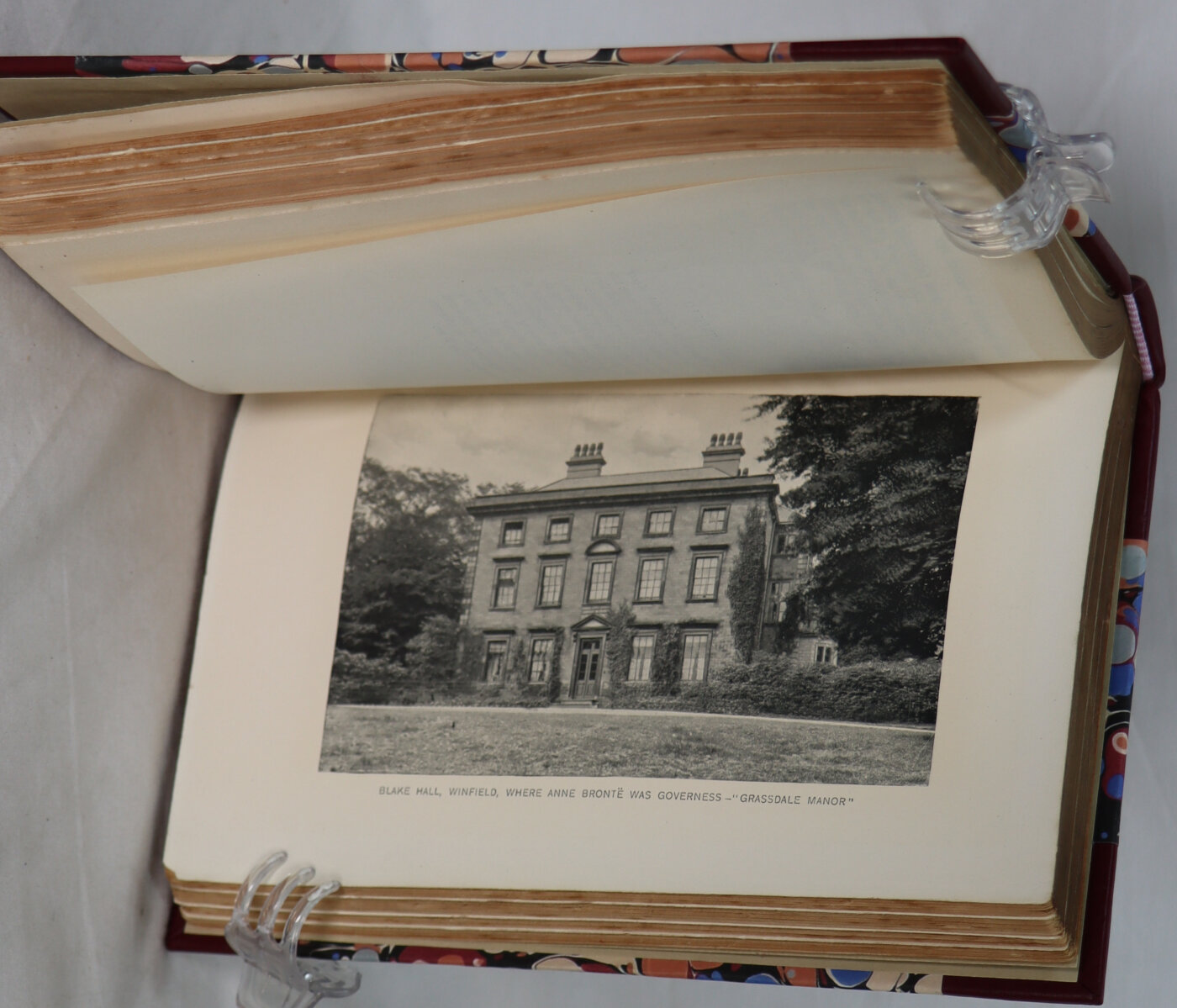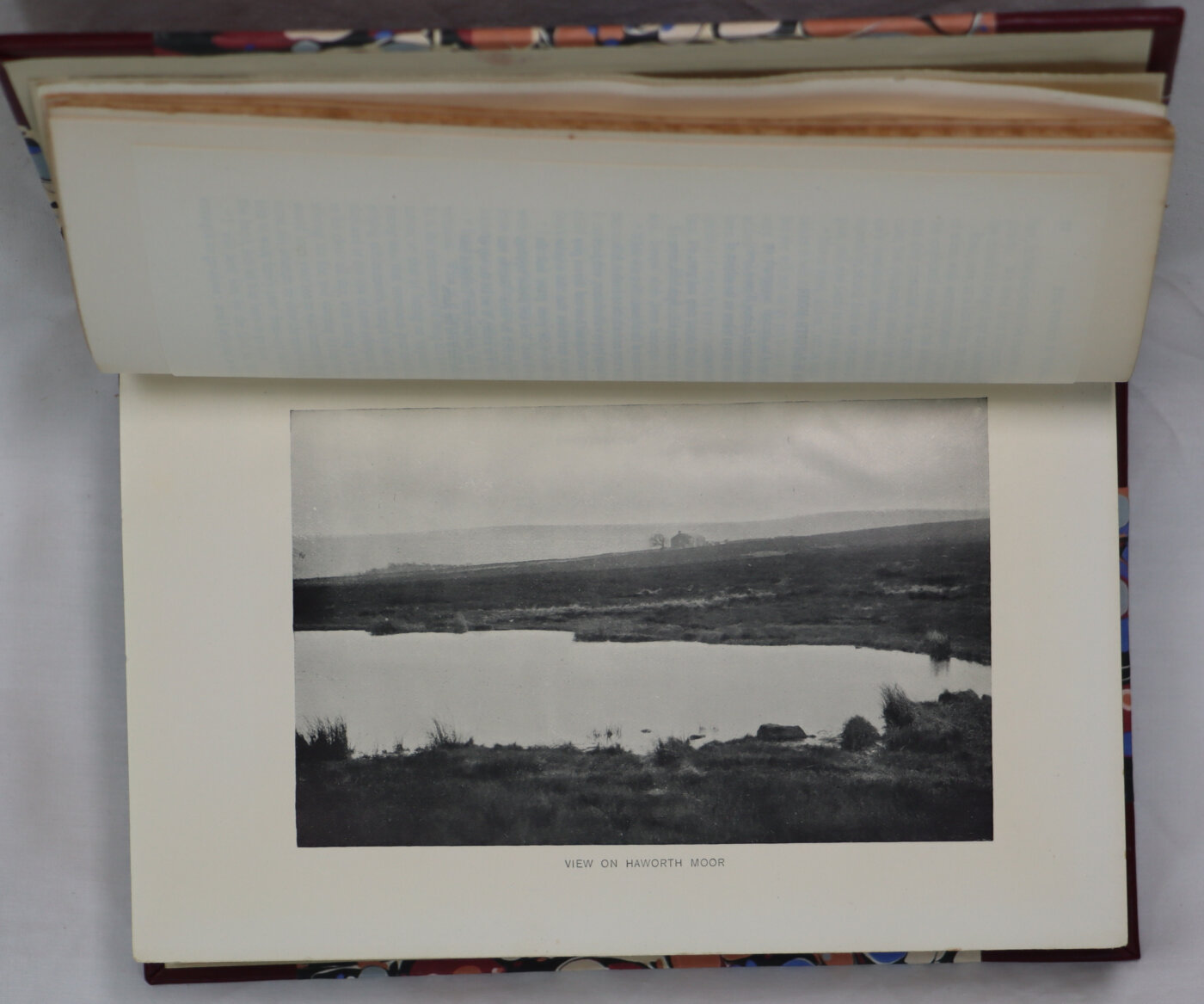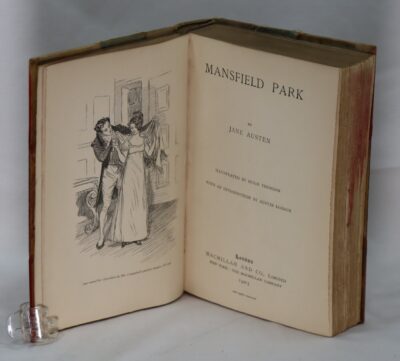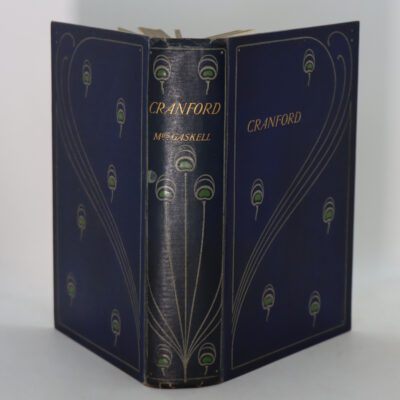Tenant of Wildfell Hall.
By Anne Bronte
Printed: Circa 1890
Publisher: The Gresham Publishing Co. London
| Dimensions | 14 × 21 × 3 cm |
|---|---|
| Language |
Language: English
Size (cminches): 14 x 21 x 3
Condition: Fine (See explanation of ratings)
Item information
Description
Rebound. Maroon calf spine with black title plate, gilt banding and title. Blue and maroon marbled boards.
F.B.A. provides an in-depth photographic presentation of this item to stimulate your feeling and touch. More traditional book descriptions are immediately available
Note: This book carries the £5.00 discount to those that subscribe to the F.B.A. mailing list.
A well finished volume nicely rebound by Mr. Brian Cole.
The Tenant of Wildfell Hall is the second and final novel written by English author Anne Brontë. It was first published in 1848 under the pseudonym Acton Bell. Probably the most shocking of the Brontës’ novels, it had an instant and phenomenal success, but after Anne’s death her sister Charlotte prevented its re-publication in England until 1854.
The novel is framed as a series of letters from Gilbert Markham to his friend about the events connected with his meeting a mysterious young widow, calling herself Helen Graham, who arrives at Wildfell Hall, an Elizabethan mansion which has been empty for many years, with her young son and a servant. Contrary to the early 19th-century norms, she pursues an artist’s career and makes an income by selling her pictures. Her strict seclusion soon gives rise to gossip in the neighbouring village and she becomes a social outcast. Refusing to believe anything scandalous about her, Gilbert befriends her and discovers her past. In the diary she gives Gilbert, she chronicles her husband’s physical and moral decline through alcohol and debauchery in his dissipated aristocratic milieu. Ultimately she flees with her son, whom she desperately wishes to save from his father’s influence. The depiction of marital strife and women’s professional work is mitigated by the strong moral message of Anne Brontë’s belief in universal salvation.
Most critics now consider The Tenant of Wildfell Hall to be one of the first feminist novels. May Sinclair, in 1913, said that “the slamming of [Helen’s] bedroom door against her husband reverberated throughout Victorian England”. In leaving her husband and taking away their child, Helen violates not only social conventions but also early 19th-century English law.
Anne Brontë (17 January 1820 – 28 May 1849) was an English novelist and poet, the youngest member of the Brontë literary family.
Anne Brontë was the daughter of Maria (née Branwell) and Patrick Brontë, a poor Irish clergyman in the Church of England. Anne lived most of her life with her family at the parish of Haworth on the Yorkshire moors. Otherwise, she attended a boarding school in Mirfield between 1836 and 1837, and between 1839 and 1845 lived elsewhere working as a governess. In 1846 she published a book of poems with her sisters and later two novels, initially under the pen name Acton Bell. Her first novel, Agnes Grey, was published in 1847 at the same time as Wuthering Heights by her sister Emily Brontë. Anne’s second novel, The Tenant of Wildfell Hall, was published in 1848. The Tenant of Wildfell Hall is often considered one of the first feminist novels.
Anne died at 29, most likely of pulmonary tuberculosis. After her death in Scarborough, her sister Charlotte edited Agnes Grey to fix issues with its first edition, but prevented republication of The Tenant of Wildfell Hall. As a result, Anne is not as well known as her sisters. Nonetheless, both of her novels are considered classics of English literature.
Condition notes
Want to know more about this item?
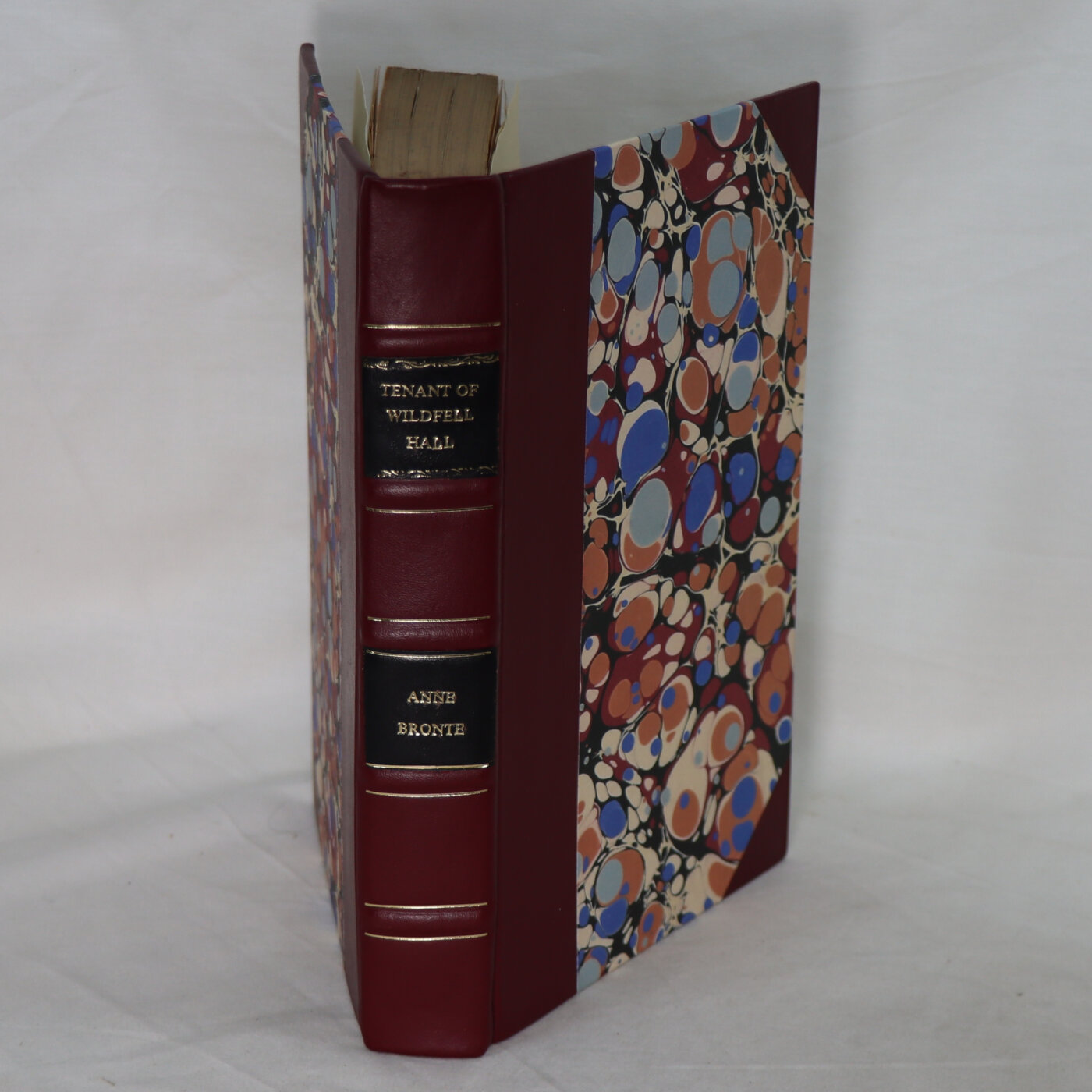
Related products
Share this Page with a friend

